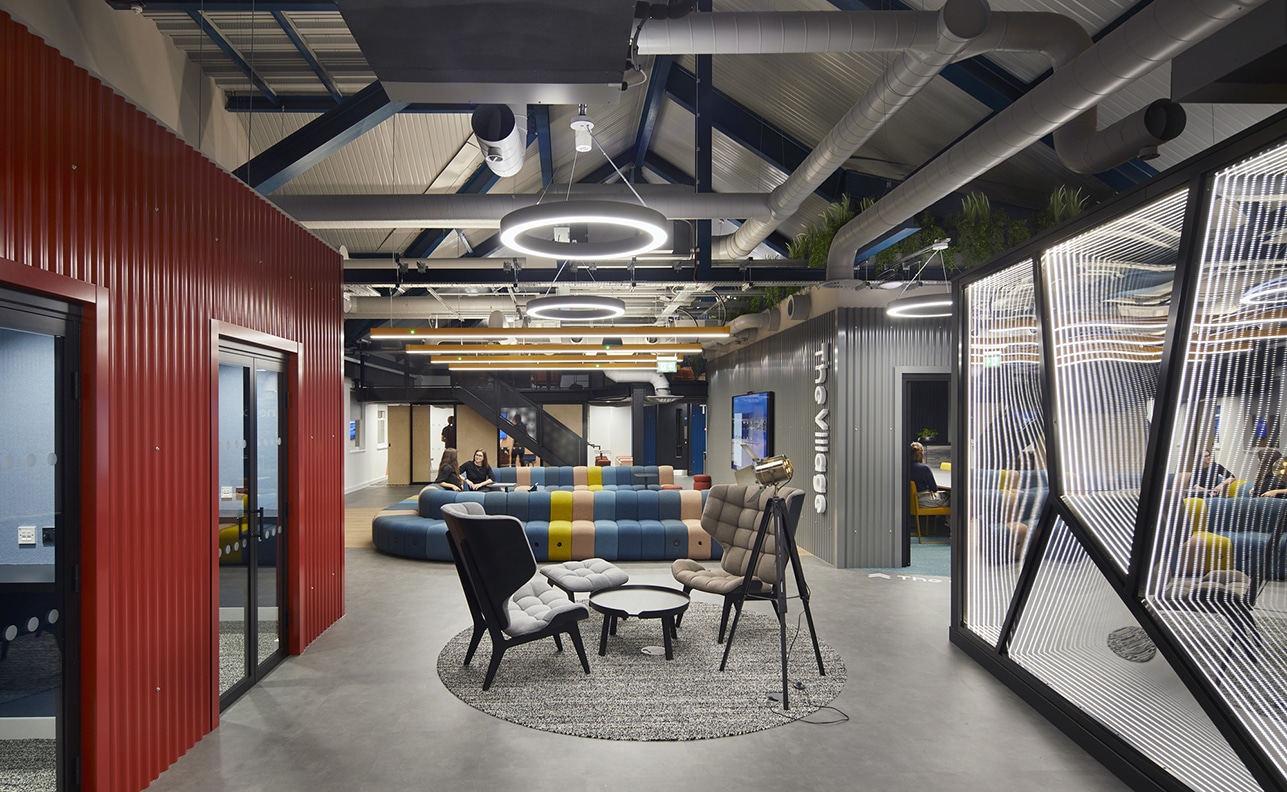According to recent research from Knight Frank, the UK gaming sector continues to boom. Growth is expected to remain strong, meaning companies in the sector must up their game to attract and retain the best talent. This helps them keep pace with their competition.
The gaming sector adapted quickly to the sudden shift to home working during the pandemic. The industry’s ability to stay productive played a big part in its massive growth. While many industries struggled, gaming saw rapid expansion. However, as companies grow, the focus is now on collaboration, creativity, and innovation. Many are realising that these elements are best achieved in shared workspaces, where teams can come together. This is similar to the challenge other sectors face getting employees back to the office.
How to Design Gaming Offices that Encourage Creativity and Collaboration
Many organisations are struggling to encourage employees, particularly those in solo-working roles, to return to the office. They question the benefits of office work. To overcome this, gaming companies need to level-up their workplace design. They need to provide environments that draw people back into the office, where they want to spend time, and where they are inspired to innovate.
1. Immersive Design
Gaming companies are transforming their offices into bold, playful environments that provide a sense of fun. These spaces go beyond typical corporate offices. They are imaginative, inspiring employees to turn ideas into reality. One example is Playdemic’s studio in Wilmslow. The design focuses on three zones:
- Creative Workspace Zone: Open-plan workspaces with sit- stand desks, designed to foster teamwork and idea-sharing.
- Indulgence Zone: The main social hub, featuring an arcade, a gamer zone, breakout spaces like a snug and a roof garden, and private call rooms.
- Refresh Zone: A central hub for both staff and visitors, with a large refreshment area, lounge, and touchdown spaces.
2. Prioritising User Experience
Gaming studios have diverse user needs, and understanding these needs is critical to design. For example, sound testers require soundproof rooms, while coders need quiet, multi-screen workstations. Adjustable desks, adaptable monitors, and controllable lighting are essential for comfort. Meanwhile, for more collaborative roles, open spaces with presentation screens are more effective. Informal spaces that encourage social interaction are equally important for building connections within teams.
It’s all about working closely with teams to understand their business processes and individual requirements from the outset.
3. Flexibility in Workspace Design
4. Accommodating Growth
5. Cutting-Edge Tech Capabilities
6. Heating, Cooling, and Ventilation
Current Trends in Gaming Workplace Design
Conclusion
Over the years, we’ve worked with companies across the gaming sector to help transform their studios into immersive, creative environments. These spaces encourage employees to return to the office, fostering collaboration and innovation. Check out another case study for Entain’s Gaming Workplace.
If you’re looking to transform your workplace, we’d love to chat! Let’s talk.








